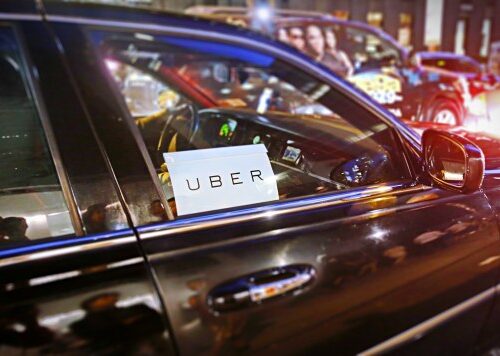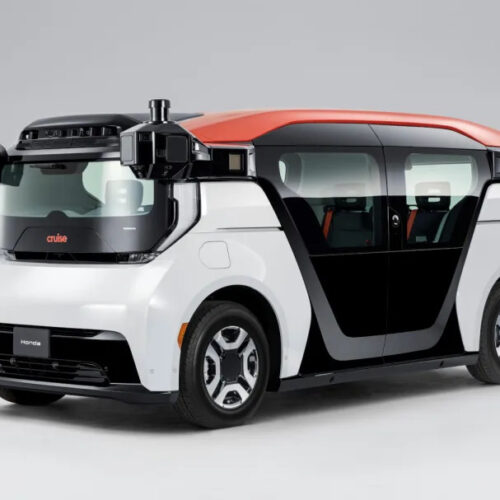In an unexpected turn of events, the city of New York has decided to lift its limits on how many rideshare drivers are allowed to be on platforms and, therefore, the roads at any given time. Still, there’s a catch… they must be fully electric vehicles.
RSG Contributor Paula Lemar covers the new NYC rideshare limits and its new electric requirements. She also details driverless cars, AI tech, and minimum wages for rideshare drivers.
Let’s dive into each summary and Paula’s take on the news.
NYC To Lift Limits On Electric Uber, Lyft, And Other Rideshare Vehicles
Topic Originally Appeared On Daily News
Summary
New York City will no longer be limiting the number of Uber, Lyft, and other rideshare cars on the road — as long as the new cars are electric.

The lifting of restrictions on the number of Taxi and Limousine Commission license plates issued to drivers working for Lyft, Uber, or other rideshare companies comes as part of the Adams administration’s goal of a fully electric or wheelchair-accessible rideshare fleet by 2030.
“We are making history, making a big bold step toward the city’s electric future,” Mayor Adams said Wednesday at a joint press conference with TLC Commissioner David Do.
My Take
Of course, there was a catch. We’ve covered here many times the green goals that the rideshare platforms, individual states, and the government have.
As 2030 continues to approach, businesses and cities are forced to start taking action to ensure the goals are reachable.
We’ve also said multiple times that these initiatives will only really work if the incentives are big enough. Not everyone can afford an electric vehicle, and not everyone wants an electric vehicle.
So, the incentives to make the switch have to match the urgency with which they want to implement real change.
For NYC this article states that this is an incentive for NYC drivers. They will be able to get on the platform more easily if they have an electric vehicle. Plus, they won’t have to lease TLC-plated vehicles in order to get on the platform, saving drivers money that way.
If you are a driver in NYC, would this encourage you to make the switch to an EV? Share with us why or why not.
New York City Will Require Uber And Lyft To Go 100 Percent Electric By 2030
Topic Originally Appeared On The Verge
Summary
In his State of the City speech Thursday, New York City Mayor Eric Adams announced that Uber and Lyft will be required to be zero emission by 2030.
The decision by one of the world’s largest markets for app-based ride-hailing has the potential to affect an estimated 100,000 for-hire vehicles.

Adams said the move will build on efforts his administration has made to electrify the city’s fleet of vehicles while installing charging infrastructure to power those vehicles throughout the five boroughs.
The mayor will likely implement his plan through the city’s Taxi and Limousine Commission, which regulates the for-hire vehicle industry, including Uber and Lyft.
Uber and Lyft, which normally chafe at new requirements and have been known to sue to block rules they don’t like, sound largely positive toward the new development in New York….
My Take
To continue the discussion from the first article, there is also a proposal on the books for Uber, Lyft, and other rideshare platforms to go all-electric by 2030, which seems to be the standard goal date that has been discussed multiple times by multiple companies and cities/states.
This article reiterates that the average EV is more expensive than a gas-powered vehicle, making these transitions to go all-electric a bit questionable.
The companies can stand behind it all they want, but until the drivers can afford to pay more for the vehicle (or until the cost of the vehicle reaches the same levels as a gas vehicle), they will likely be scrambling to meet their goals.
GM, Honda, And Cruise Plan To Offer Driverless Taxi Rides In Japan In 2026
Topic Originally Appeared On Engadget
Summary
GM, Cruise, and Honda are teaming up to introduce a driverless ride-hailing service in Japan, which could launch in early 2026 if things go according to plan.
The companies have entered a memorandum of understanding to form a joint venture for the project, and they’re hoping to establish the company in the first half of 2024, provided they’re able to secure the necessary regulatory approvals by then.
Their ride-hailing service will deploy the Cruise Origin electric shuttle van that the companies had developed together. It’s a self-driving vehicle with no steering wheel or even a driver’s seat, which means it also has no pedals and no rearview mirror.

Instead, it has a big cabin space where up to six passengers can sit facing each other, and its doors slide open like a subway’s. “The opportunity for the ridehail service in Japan, which is expected to be the first of its kind, is huge,” GM said in its announcement.
It has the potential to solve the country’s ongoing driver shortage and could provide an alternative for those who can’t use Tokyo’s extensive train and subway system for any reason….
My Take
Meanwhile, instead of focusing on electric vehicles, there’s also the focus on driverless vehicles on the rise.
It was only a matter of time before major car manufacturers decided to team up and create driverless vehicles of their own. They can’t let Uber, Waymo, and other fleets have all the fun…and monetary gain.
The year 2026 isn’t that far off. These are pretty lofty goals considering how early in the process they are in developing these vehicles. Keep an eye on Tokyo for this development.
Uber And Lyft Drivers Group Schisms As Minnesota Governor’s Task Force Weighs Regulations
Topic Originally Appeared On Reformer
Summary
A meeting of the governor’s task force in charge of proposing regulations and minimum wages for Uber and Lyft drivers was interrupted Tuesday by drivers shouting their frustrations, alleging other drivers on the task force no longer represent them.
“He is not representing us… Can we have a chance to talk, please?” one driver shouted, but the task force plowed forward through multiple interruptions, discussing insurance deductibles and policies on rider service animals.
The frustration boiled over after drivers said they learned Eid Ali, president of the nascent but influential worker group Minnesota Uber/Lyft Drivers Association, failed to negotiate with Uber and Lyft or tell drivers about a deal that could have won the governor’s support and brought them bigger paychecks by now.
“He never negotiated and never shared (information) with drivers. He was always acting by himself,” said Mohamed Egal, who said he is the vice president of MULDA.
My Take
I feel like this is going to be an ongoing discussion for a while. It might be helpful for all parties involved to actually listen to real drivers whose lives would be affected by any changes and whose lives are affected by current policies and business structures.
They are the ones who know what is going on and who are putting in the work. We can’t expect things to get better for drivers without actively listening to the drivers themselves. Do better, Minnesota.
Salesforce And Instacart Execs Share 4 Practical Ways They’re Using AI To Drive Business
Topic Originally Appeared On Fortune
Summary
Many companies talk about the importance of AI, but questions remain about its practical use in business.
Executives Clara Shih, Chief Executive Officer at Salesforce AI, and Asha Sharma, Chief Operating Officer at Instacart, shared a few ways they’ve successfully implemented the technology at Fortune’s Most Powerful Women Summit in Laguna Niguel, Calif.
Their insights shed light on how leaders can successfully implement AI as part of a modern business strategy. Here are their top four insights….
My Take
AI is on the rise in all areas of our lives. Businesses have always sought a way to target their customers as efficiently and effectively as possible. AI is stepping up the game to make it even more accurate for businesses to connect to customers.
How do you feel about how prevalent AI is becoming?
RSG in the News This Week
Read more trending topics in the news this week:
- Meet the typical gig driver: A millennial earning up to $40 per hour who doesn’t have another job and depends on your tips
- Lyft announces new program to pair women and nonbinary drivers and riders
Must Listen Or Watch RSG Content
Here is this week’s featured podcast episode and YouTube video:
- RSG246: Discover Daytrip – Rideshare Meets Tour Guides & Tourism
- Would You Want To FLY For Uber Rather Than Drive For Uber?
- Make sure you Subscribe so you don’t miss out on future conversations and interviews!




